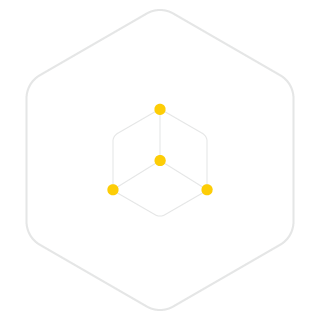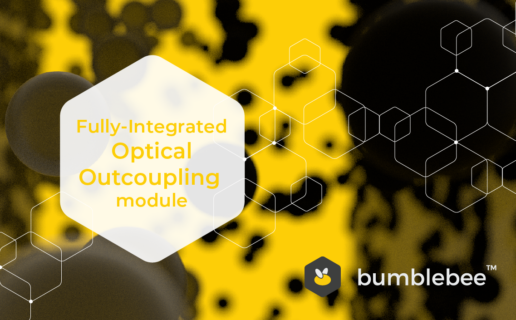
Bumblebee
Bumblebee is Simbeyond’s state-of-the-art simulation software, which is specifically optimized for molecular-scale simulations of opto-electronic processes in disordered systems, such as OLEDs, OPV and OFETs.
Experimental OLED R&D processes often lead to high costs and throughput time for both device manufacturers and chemical suppliers. Bumblebee allows you to replace a significant part of trial-and-error R&D processes, rustling in higher cost efficiency and shorter time-to-market. All of that can be done from your laptop in your own private cloud, thanks to the intuitive web interface.
Editions
Bumblebee is now available in two editions which are tailored to your needs. Whether you need to simulate the simplest or more complex devices, you are able to choose between Bumblebee Lite and Bumblebee X.

For users who need to quickly start with simulations of simple devices without the full range of Bumblebee capabilities.

For users who need the maximum flexibility to simulate complex devices and make use of the full Bumblebee capabilities.
| Modules | Bumblebee Lite | Bumblebee X |
|---|---|---|
API (submit simulations with Python) |
✓ |
|
3DkMC engine (predict the performance materials and stack architectures, over a range of operational conditions) |
✓ |
✓ |
3DME engine (test at low voltage operation) |
Available on request |
|
Acceleration (faster device simulation) |
✓ |
✓ |
Excitonics (compute excitons) |
✓ |
✓ |
Absorption (light absorption on materials) |
✓ |
|
Degradation (material can degrade or change in the simulation) |
✓ |
|
Transient parameters (time-dependent simulation parameters) |
✓ |
|
Advanced morphologies (compute advanced material mixtures) |
✓ |
Advanced Simulations

Material evaluation
Bumblebee allows you to predict the electrical characteristics, efficiency, color point and lifetime of devices based on material parameters obtained from a few dedicated experiments or from quantum chemistry. By building a database of materials, the performance of any combination of these materials can be predicted.

Research excellence
Bumblebee is already intensively used both in an academic environment to perform cutting-edge research, as well as in industry to more efficiently develop state-of-the-art OLED stacks and solve real-life problems. There are many other areas of application within which bumblebee can be used, including organic photovoltaics (OPV) and organic field-effect transistors (OFET).

Full 3-D device model
Bumblebee is the first on the market to offer 3D molecular-scale mechanistic device modelling for organic devices. The unique mechanistic approach to device modelling provided by bumblebee allows one to analyze, predict and improve the performance of your devices, not only for today’s stack architectures but also for tomorrow’s.
Our Powerful Features
Organic light-emitting diodes (OLED)
Organic photovoltaics (OPV) and photodetectors (OPD)
Organic field effect transistors (OFET)
Electrical device and material modeling
Excitonic device and material modeling
Degradation and lifetime studies
Intuitive web interface
Visualization
Integrated post-processing
No installation needed
- Effects of disorder and traps
- Non-uniform currents
- Mixed-matrix emissive layer
- Any 3D structure possible, including
- graded concentration profiles
- laterally non-uniform structures
- rough, intermixed interfaces
- Charge accumulation near interfaces
- Charge carrier loss due to imperfect blocking
- Voltage loss across transport layers
- Dark-injection studies
- Roll-off due to polaron quenching and exciton annihilation
- Shape of the recombination zone
- Color-tuning using co-doping
- Delayed fluorescence, TADF, and hyperfluorescence
- Transient electroluminescence
- Consequences of degradation processes to device performance
- Mobility studies, including
- anisotropy
- molecular doping
- any shape of the density of states
- any type of energetic correlation
- any type of the positional disorder
- Recombination rate studies
- Exciton diffusion and energy transfer studies
- Photoluminescence studies:
- steady-state
- time-resolved
- polaron-singlet and polaron-triplet quenching
- exciton-exciton annihilation (for singlets and triplets)
- effect of emissive dipole orientation
- Photobleaching studies
- Visualization of current density filaments
- Visualization of events
- charge and exciton movement
- exciton generation and dissociation
- exciton quenching
- degradation
- Fully interactive
- move through your device
- take snapshots
- save as movie
The intuitive interface of Bumblebee guides you through the complete simulation workflow, from preparing your simulations to the post-processing, all from your web browser.
- Data security is our priority
- Integrated post-processing features to help you visualize your results immediately and choose which data to extract.
- All graphs and data can be saved on your computer and further processed on your chosen system.
- Kinetic Monte Carlo simulation
- Mechanistic approach based on physical parameters
- Highly optimized code base written in C++
- scalable: >107 molecules is feasible and realistic
- simulations with >104 charge carriers and excitons are possible
- Integrated post-processing
Wondering if Bumblebee can answer your research questions? Here you can find example application notes for diverse topics.
- Thermally Activated Delayed Fluorescence in OLEDs
- State-of-the-art 3.5th generation OLEDs
- Transient electroluminescence in OLEDs
- Modeling Organic Photovoltaic devices
- Recent browser with HTML5 support




